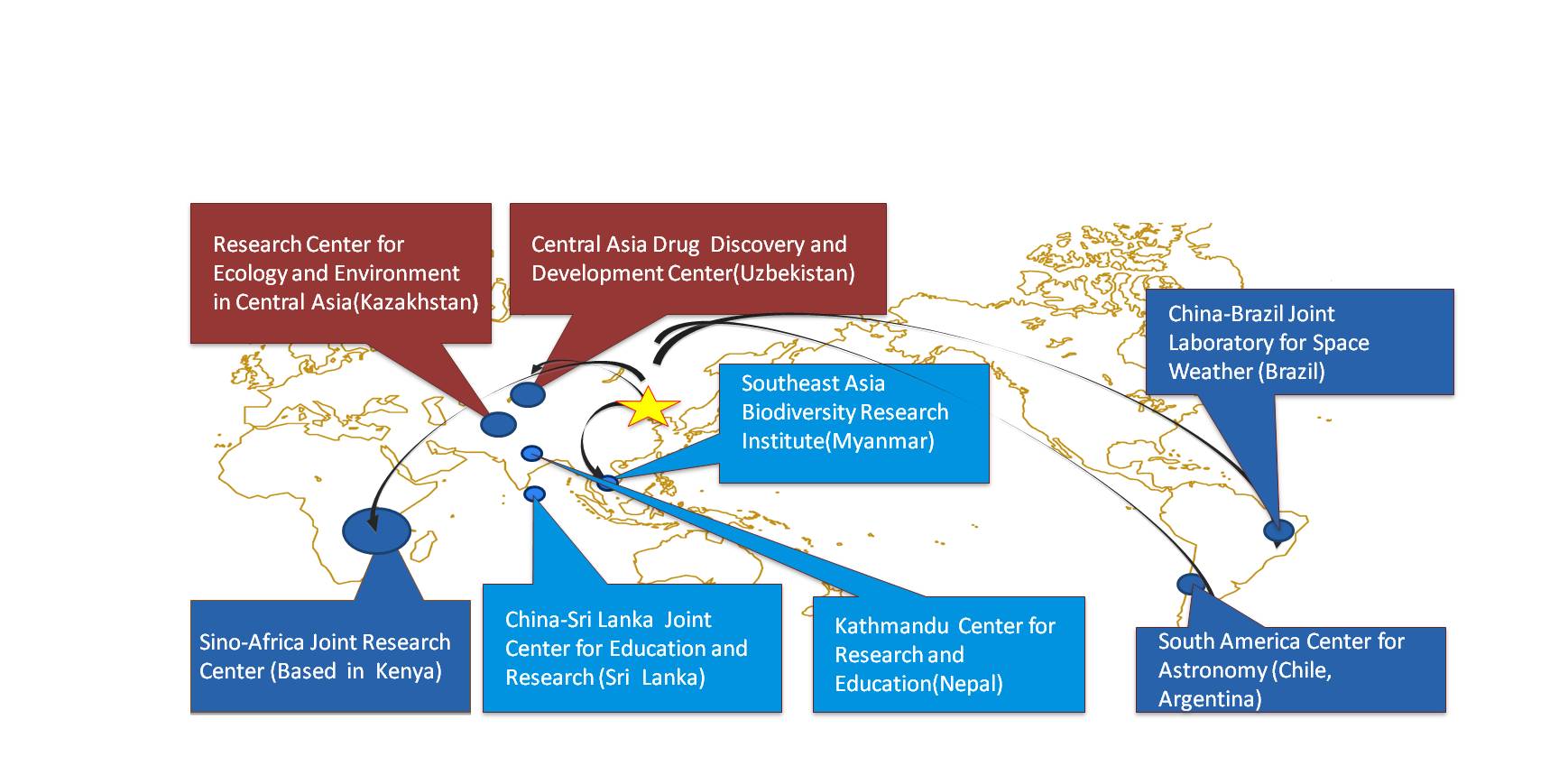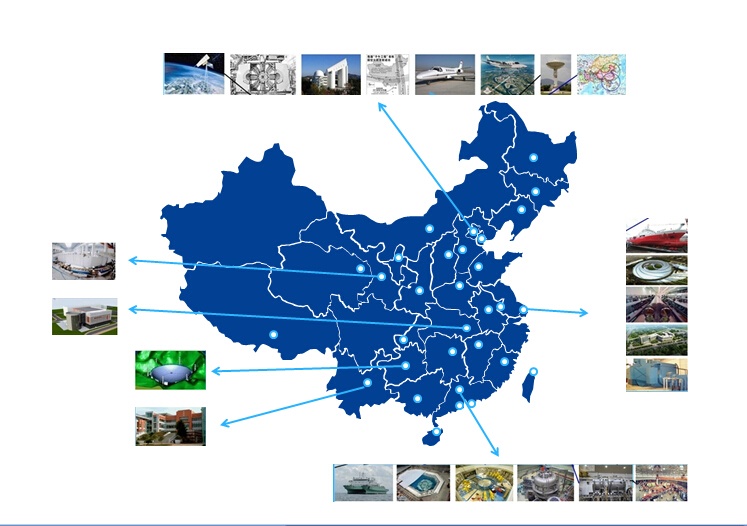

International science and technology cooperation at Chinese Academy of Sciences (CAS)allows access to foreign ideas, helps to achieve major breakthroughs in research, and nurtures young scientists. It also expands China’s overseas influence, improves China’s international status and serves its diplomatic strategy of mutually beneficial cooperation.


During China’s 12th Five-Year Plan period (2011-15), international cooperation helped CAS deliver a series of major research achievements, resolve some key technical problems, and introduce and cultivate innovative talents in science and technology.
For instance, a third kind of neutrino oscillation was observed during the Daya Bay experiment jointly conducted by CAS and the US Department of Energy. The discovery was selected as one of the top 10 scientific breakthroughs by Science magazine. In 2015, Wang Yifang, who led the Daya Bay neutrino oscillation experiment in China, was awarded the Breakthrough Prize, the top prize in science.
In 2013, publication of the revised English edition of Flora of China, the largest-scale flora publication in the world, was completed, thanks to 25 years of collaborative efforts by China, the US and other countries.
Overseas footprint
In 2012, CAS initiated a plan of going international to enhance integration of international resources in science and technology, increase the academy’s overseas influence, raise its public profile, and sharpen its competitive edge.
In 2013, CAS launched expanded science and education cooperation with developing countries, with plans made in three core areas – overseas institutions, talent cultivation and Third World Academy of Sciences(TWAS) centers in China, which facilitated internal and external collaborations and boosted the developing world’s science and technology development in all aspects.
Eight overseas institutions under CAS – located in Africa, Central Asia, Southeast Asia, South Asia and South America – have become important platforms for talent cultivation, scientific and technological innovation, interdisciplinary research, and integration of industries, education and research.
Every year, CAS provides financial support to 200 doctoral students from the developing world and to nearly 200 visiting young scholars and postdoctoral fellows to study or work in China. In this way, CAS has helped developing countries construct their scientific and technological frameworks.
CAS-TWAS centers of excellence, based on China’s advantages and concerned with the developing world’s sustainable development, have cultivated more than 180 professionals in science and technology for over 40 developing countries.

Cooperation with “the Belt and Road” countries
During the 12th Five-Year Plan period, CAS carried out cooperation in science and technology with countries along “the Belt and Road”, which won wide domestic and foreign support.
Technological cooperation on the Silk Road Economic Belt has concentrated on fields like drug research and development, protection of ecological systems, sustainable development of the environment and resource capacity assessment.
As a contribution to the 21st-Century Maritime Silk Road, CAS has focused on areas such as protection of biodiversity, ocean environment and climate change, desertification control, prevention and control of infectious diseases, astronomical observation, and space weather monitoring.
In addition, CAS is actively promoting demonstrated applications and transfers of China’s advantageous science and technology achievements. For example, the academy has made use of China’s satellites and airborne remote sensing technology to assist decision-makers in the conservation of the Angkor World Heritage Site.
Talent programs
In the 12th Five-Year Plan period, CAS launched an international talent program, attracting nearly 3,000 top scientists and researchers to China from more than 80 countries.
Since 2007, a total of 69 experts from 20 countries including the US, Japan and Germany, have won the Award for International Scientific Cooperation and the CAS International Cooperation Award for Young Scientists due to outstanding achievements through cooperation with China.
International organizations
Accomplished CAS scientists are playing a leading role in the developing world as well as an increasingly prominent role in major international academic organizations that have traditionally been dominated by developed countries. More than 600 scientists have worked or are working for major international science and technology organizations, with about 160 appointed with senior positions.
CAS President Bai Chunli won a second term as TWAS president in 2015. Under Bai’s leadership, extensive science and technology cooperation networks were set up through the TWAS platform, which significantly boosted the developing world’s innovation capability in major disciplines, laid a new foundation for promoting South-North cooperation, and enhanced China’s reputation in science and technology.
In 2014, CAS hosted a successful Annual Global Meeting of the Global Research Council (GRC) in Beijing, at which Bai was elected as GRC president. Discussions were also held on global innovation management, with topics including the cultivation of young scientists.
A year later, CAS co-organized the International Summit on Human Gene Editing with US and British research institutions, which had a far-reaching influence on policies and decisions of countries across the world.
CAS has proposed and participated in many international science programs through the platform of international academic organizations. It initiated and took an active part in international programs including the International Space Weather Meridian Circle Program, the Third Pole Environment, and the International Thermonuclear Experimental Reactor (ITER). In doing so it joined the science and technology world’s efforts in researching and resolving major global issues.
Collaboration with world-class research institutions
The academy also joined hands with world-class research institutions in remarkable science and technology projects, including:
--construction of a joint nuclear research center with the US Department of Energy;
--enhanced cooperation with top universities including Harvard in frontier sciences and cultivation of postgraduates;
–construction of the Institute Pasteur of Shanghai jointly with France;
–construction of the CAS-MPG Partner Institute for Computational Biology with Germany;
--enhanced cooperation, with a focus on high technology, with Russia
--cooperation with small and medium-sized countries that are strong in science and technology, concentrating on giving full play to each other’s advantages, as well as on co-funded programs in selected areas.
Mega-science facilities
CAS owns 23 advanced mega-science facilities, accounting for 85 percent of the country’s total. Mega-science facilities, such as the Shanghai Synchrotron Radiation Facility and the Beijing Electron Positron Collider, as well as big data platforms, have attracted top scientists from around the world to participate in their design, construction, maintenance, operation and use. As international cooperation platforms, they are open to the whole world and have helped accomplish major research achievements.
CAS aspires to benefit all of humanity through deepened integration with global innovation and participation in global governance. The academy will always be committed to open-mindedness, self-confidence, equality and cooperation, while advancing toward the future in the world of science.
Source: China Science Daily